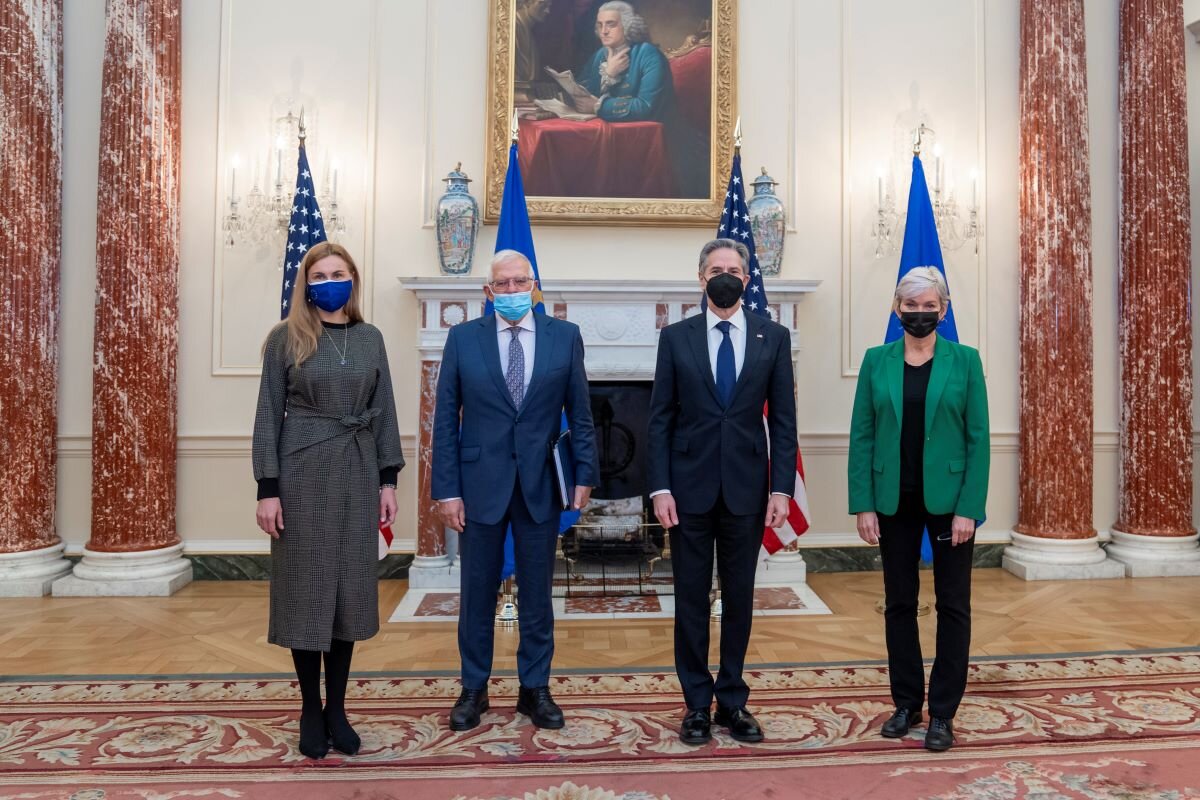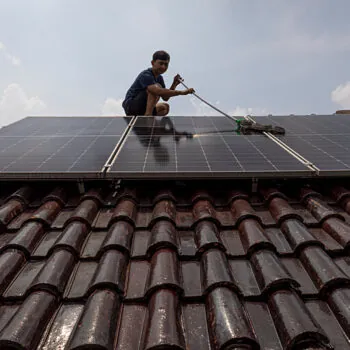The EU-US Energy Council met this week with HR/VP Josep Borrell and European Energy Commissioner Kadri Simson joining their US counterparts, Secretary of State Antony Blinken and Secretary of Energy Jennifer Granholm, for a high-level dialogue on transatlantic energy diplomacy.
Even with high energy prices, concerns over the security of energy, and ongoing tension between Russia and NATO dominating headlines, the Council recognized that rerouting more US LNG exports to Europe is a short-term response. To sustainably reduce Europe’s reliance on Russian gas and exposure to shocks from volatile energy markets, the Council emphasized that accelerating the transition to clean energy is the solution.
The Transatlantic Green Technology Alliance stands out as a vehicle for rapidly deploying clean energy technology and facilitating access to affordable clean energy to the region and beyond. But so far, the platform isn’t up and running, despite agreements at last June’s EU-US Summit.
An engine for global green tech deployment and enhanced energy security
The EU has signalled interest in kickstarting the Transatlantic Green Technology Alliance (TGTA) with HR/VP Josep Borrell calling for a relaunch at the EU-US Energy Council. If launched in earnest with dedicated capacity and resources, regular meetings and concrete timelines, as well as clear priorities, the TGTA could emerge as a platform for EU-US clean energy collaboration – speeding up the transition to clean energy and strengthening the energy security of partner countries.
Recent cooperation vs. competition narratives on the innovation of green technology and the energy transition have put a spotlight on the role of multilateral innovation partnerships. The EU, Member States and the US are ramping up investments in research and innovation. With the US and EU calling for a focus on implementation plus more ambition, further innovation on early-stage technologies and scaling up green technology deployment will be crucial to achieving climate targets. Furthermore, the rapid deployment of clean energy technologies can serve as a key response in addressing the energy security of the EU and major partners.
Teaming up on key technology breakthroughs
The International Energy Agency finds that 35% of the cumulative emissions reductions needed to reach net zero emissions come from key technologies that are at the prototype or demonstration phase. Even for technologies past the prototype stage, several are not yet deployed on a mass-market scale. With 40% of emissions reductions expected to come from technologies not yet scaled up, EU-US leadership on rapid global deployment is critical.
The Transatlantic Green Technology Alliance (TGTA) offers a chance for the EU and US to deliver and scale up green technologies necessary for the green transition – not only domestically, but globally. Some could include:
- Heat pumps
- Advanced metering
- Electric vehicle batteries and charging infrastructure
- long-distance transmission lines and grid updates
- district geothermal heating
- long duration energy storage
- renewable hydrogen
- sustainable aviation fuels
- direct air capture
- tidal energy
The proposal for a green tech alliance was first suggested by the European Commission shortly after the US election in December 2020, and officially agreed to at the EU-US Summit in June 2021. Despite enthusiasm for the alliance during the summit, there has been no significant follow up from either side.
TGTA activities can cut across several Directorate-Generals in the EU, for instance DG ENER and DG RTD, as well as US departments. This can build on efforts in existing bilateral and multilateral fora. This includes the EU-US Energy Council, the Trade and Tech Council, the Partnership for Transatlantic Energy and Climate Cooperation, the Clean Energy Ministerial & Mission Innovation (with the US hosting this year), the G7, G20 and COP27.
Rapid deployment in partner countries, starting with Ukraine
Following the EU-US Energy Council meeting, the EU and US can use the Transatlantic Green Technology Alliance to boost the energy security of key partners like Ukraine. The spike in energy prices, and geopolitical tensions over the energy supply of Europe and Ukraine, demonstrate the need to scale up global clean energy technology deployment. By giving the TGTA a true start with dedicated capacity, financial resources and political buy-in, the EU and US can show Ukraine (and other partners) how EU-US collaboration can accelerate the clean energy transition and reduce energy security risks.
Furthermore, to enable confidence among other major emerging economies to enhance their climate ambition and implement 2030 targets, backing up the TGTA with a clear roadmap of investments and timelines is essential for ensuring trust from partner countries.
Under this bilateral platform, EU and US decisionmakers can address the fundamental questions surrounding green technology uptake in the clean energy transition on both sides of the Atlantic and beyond.


